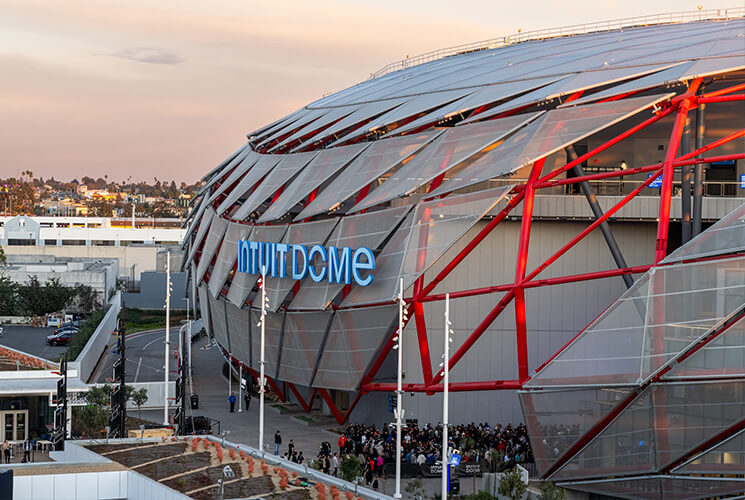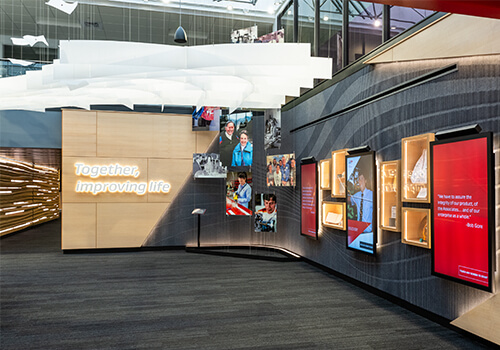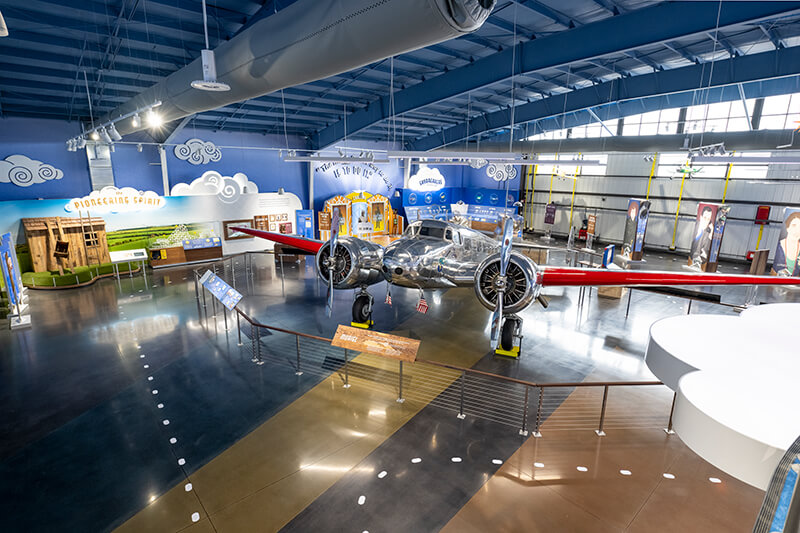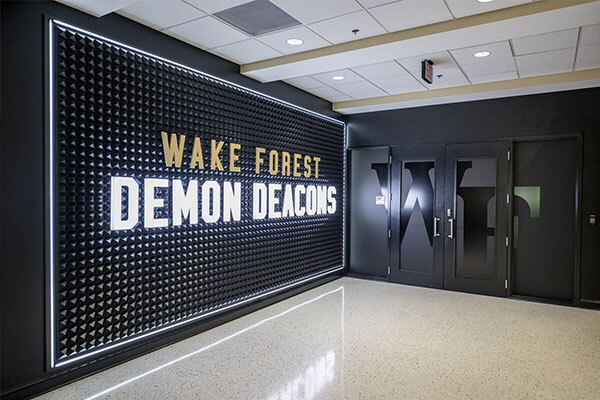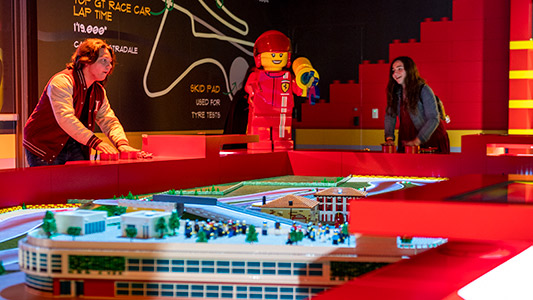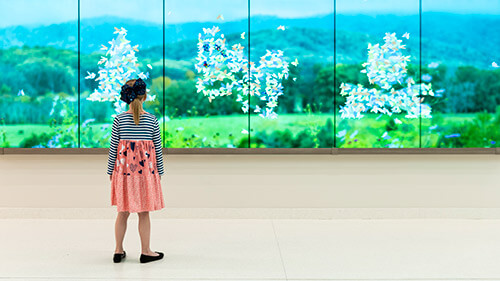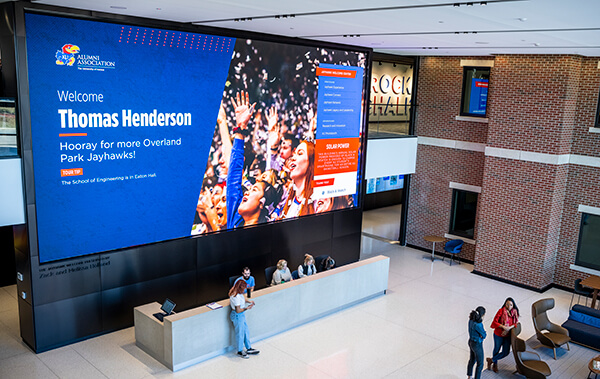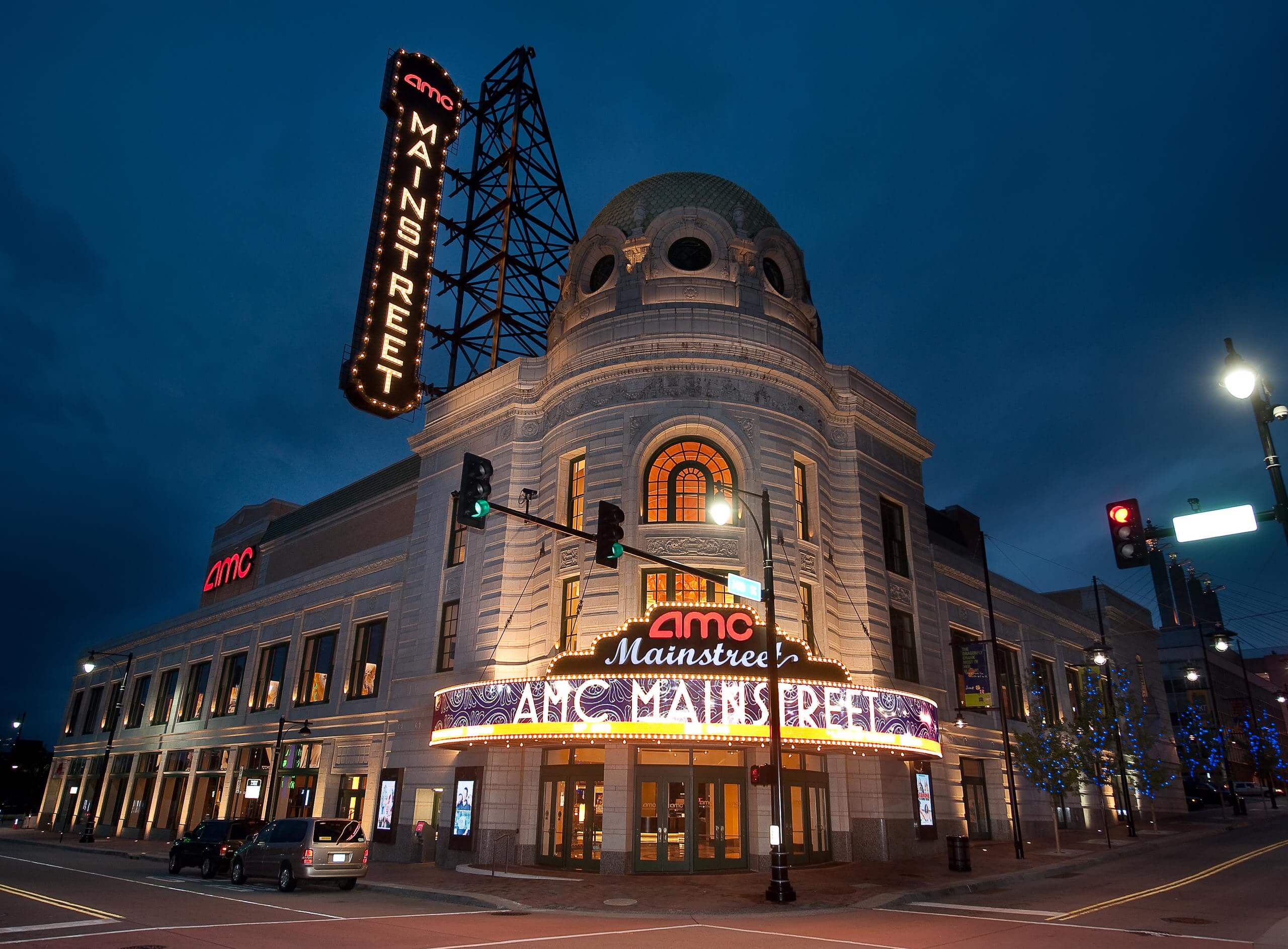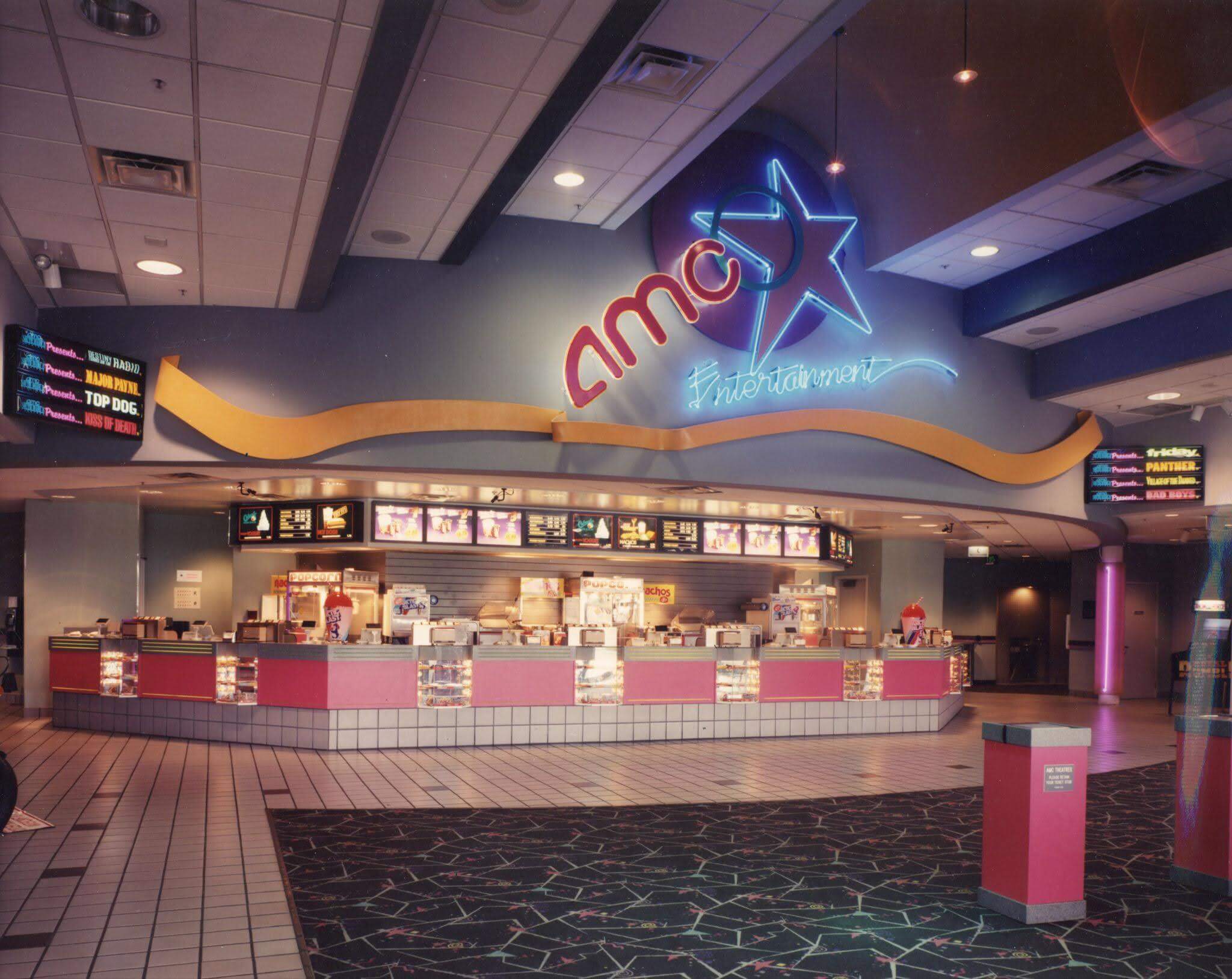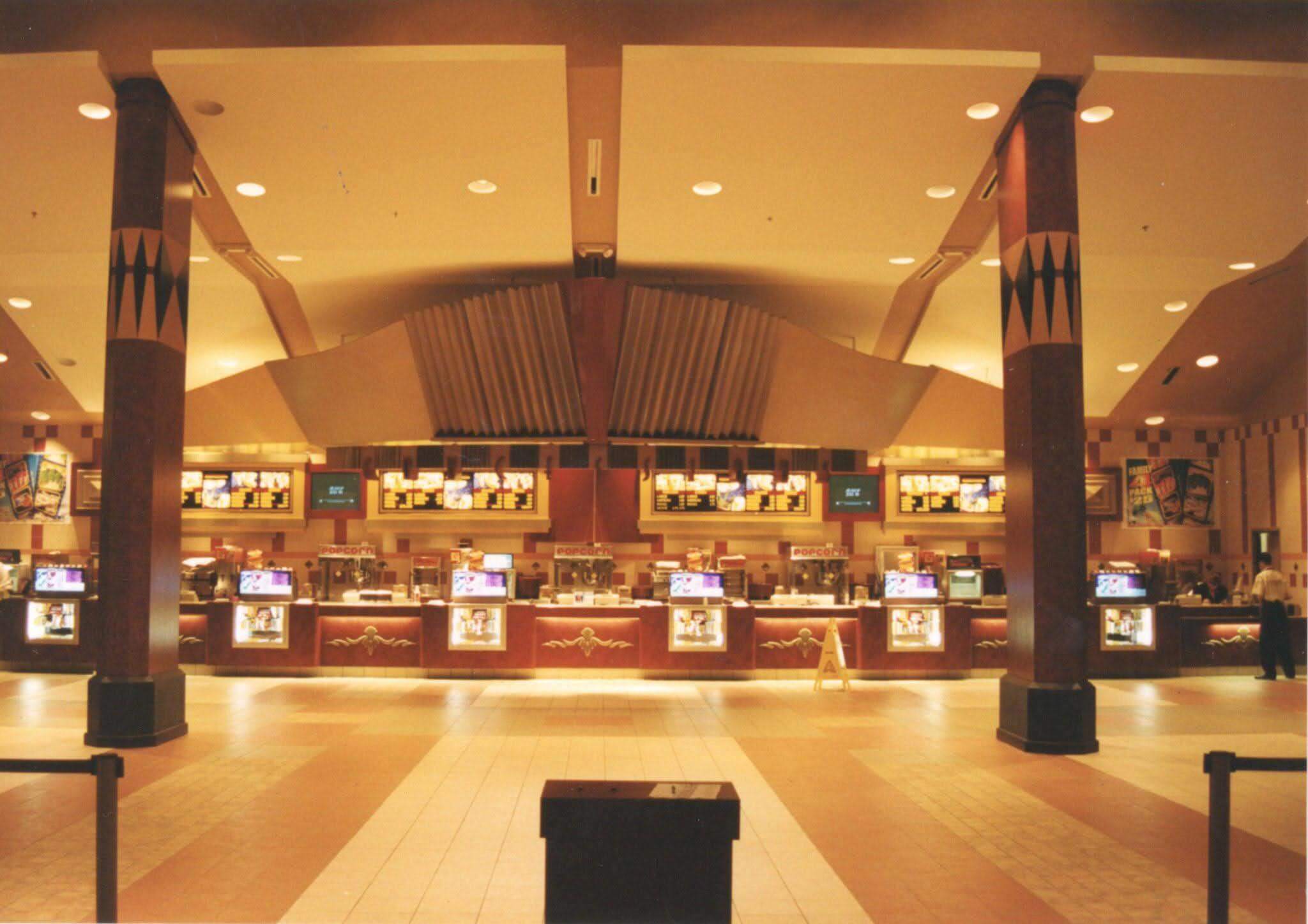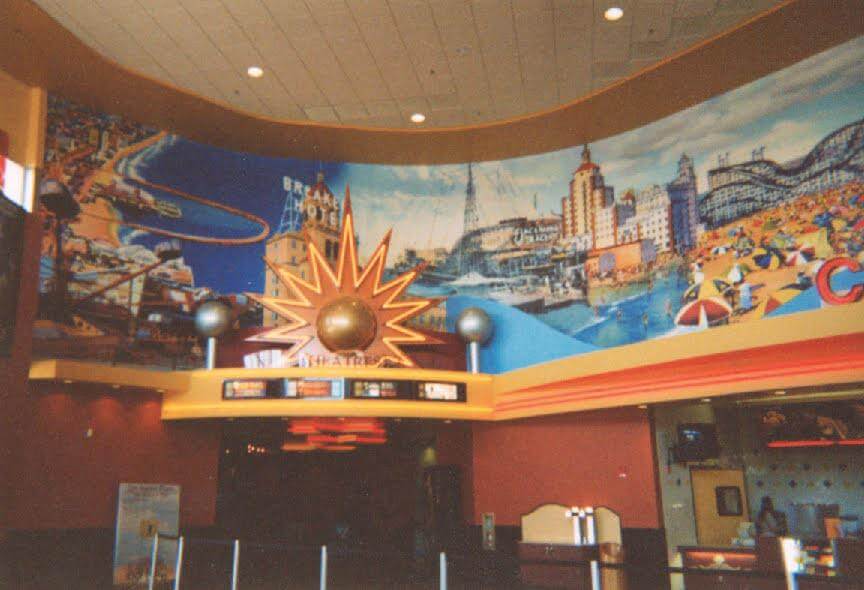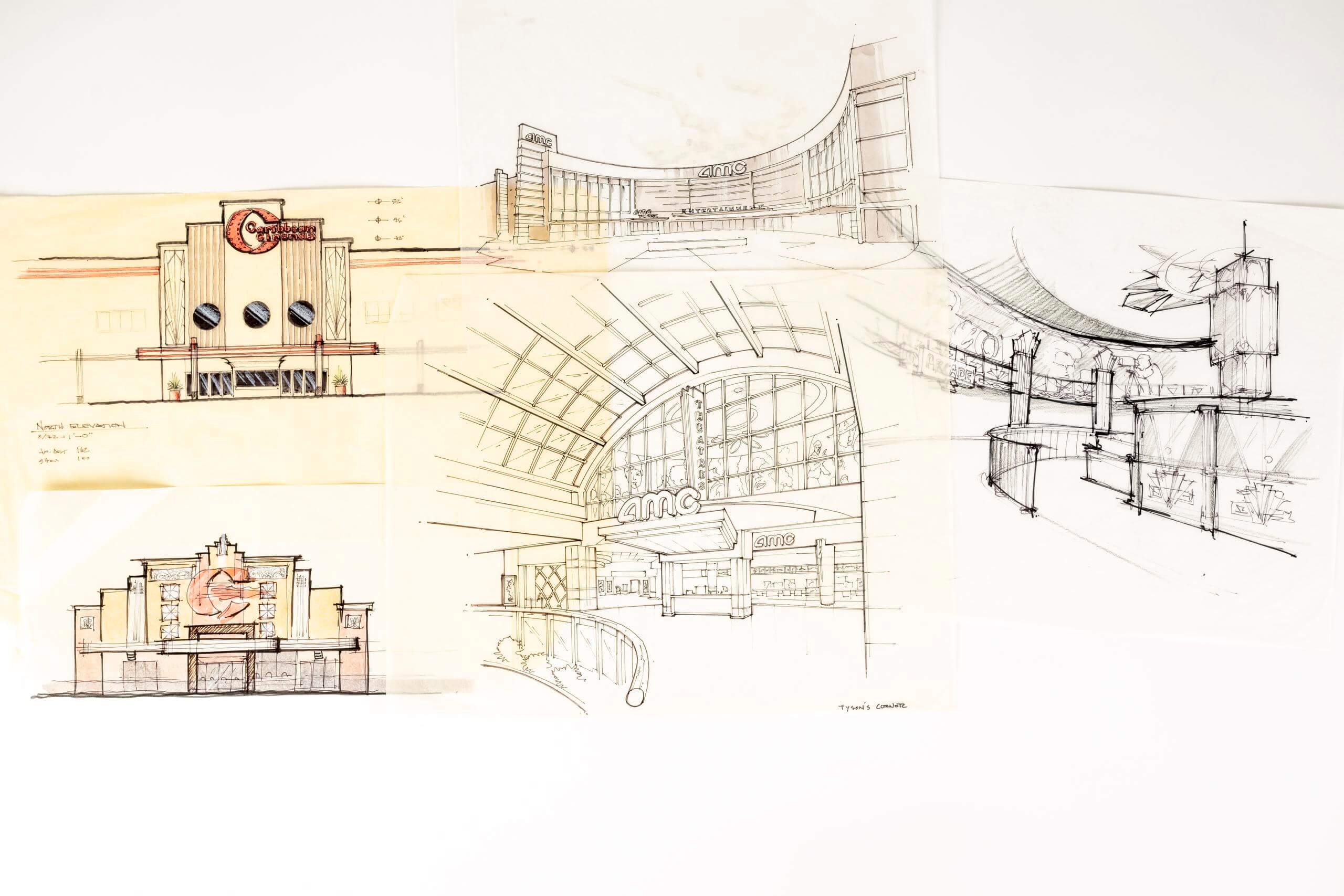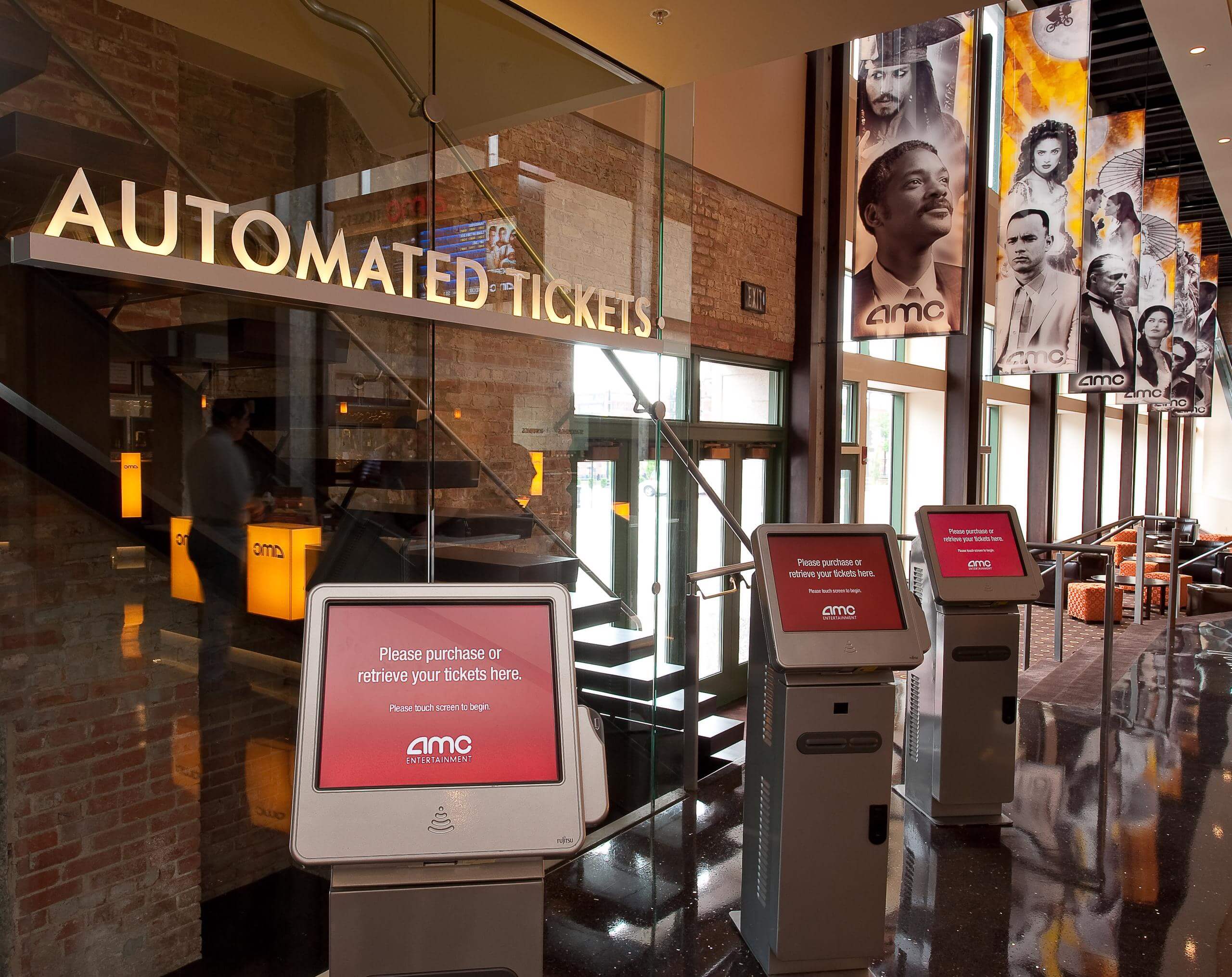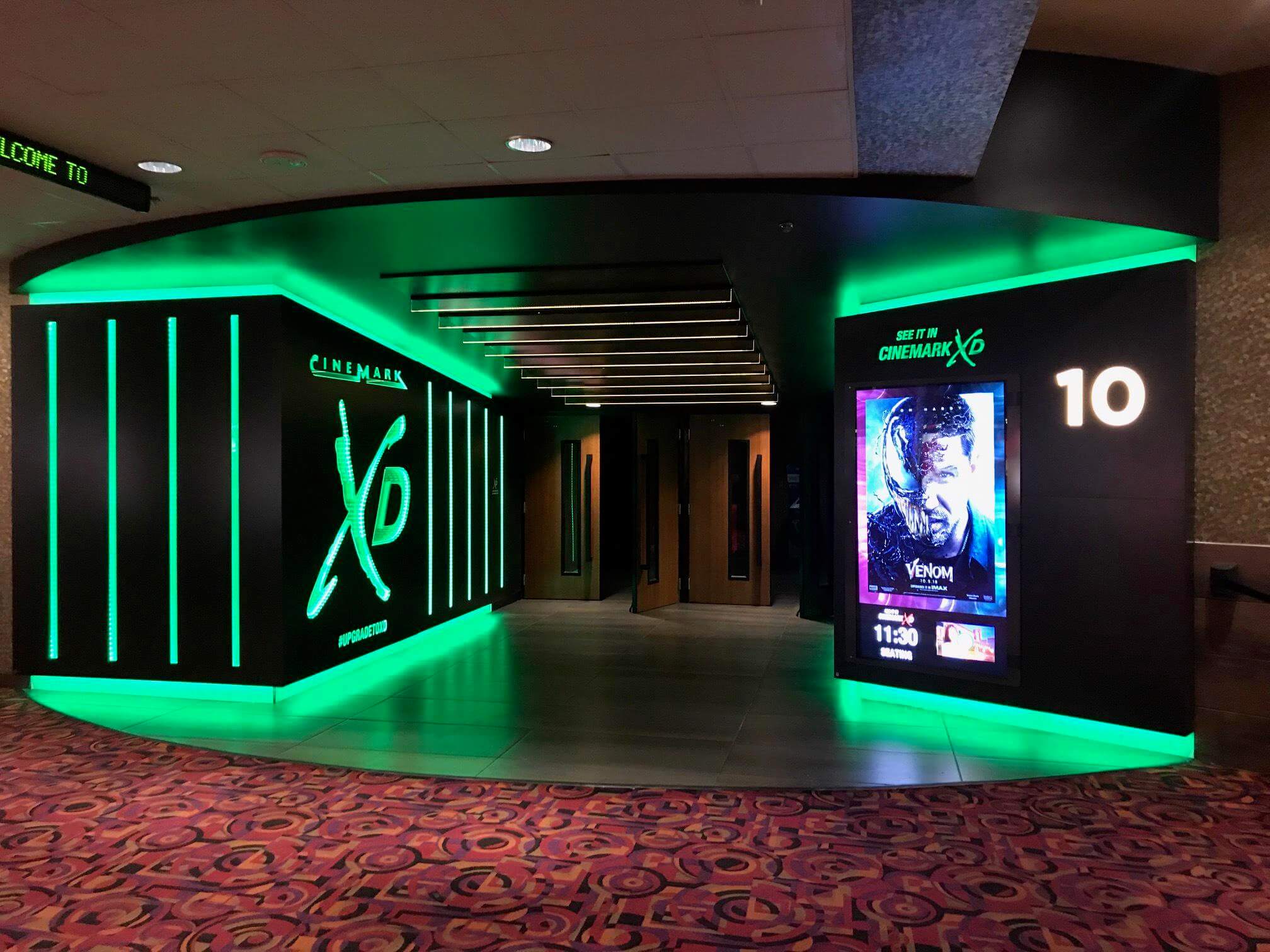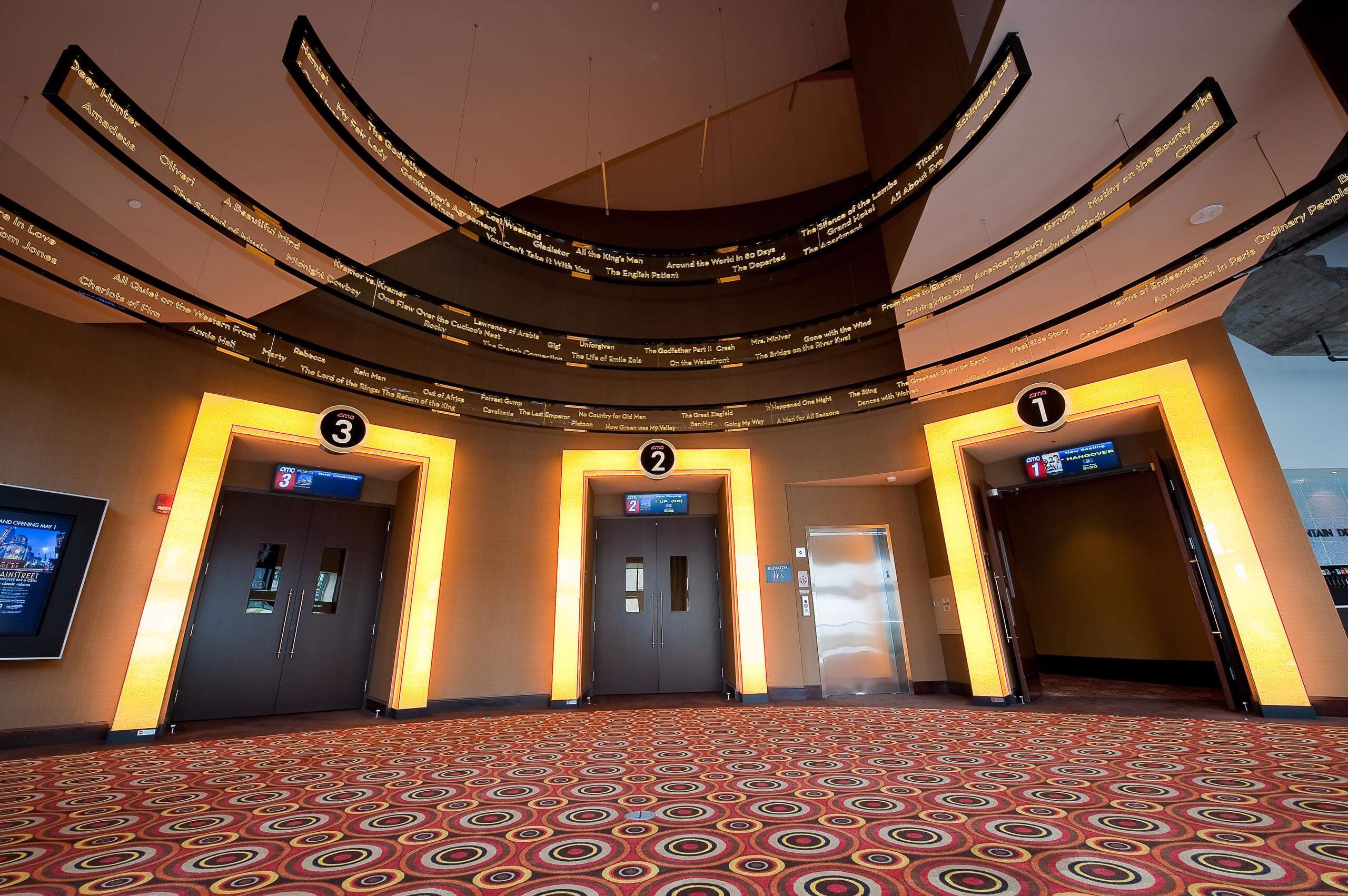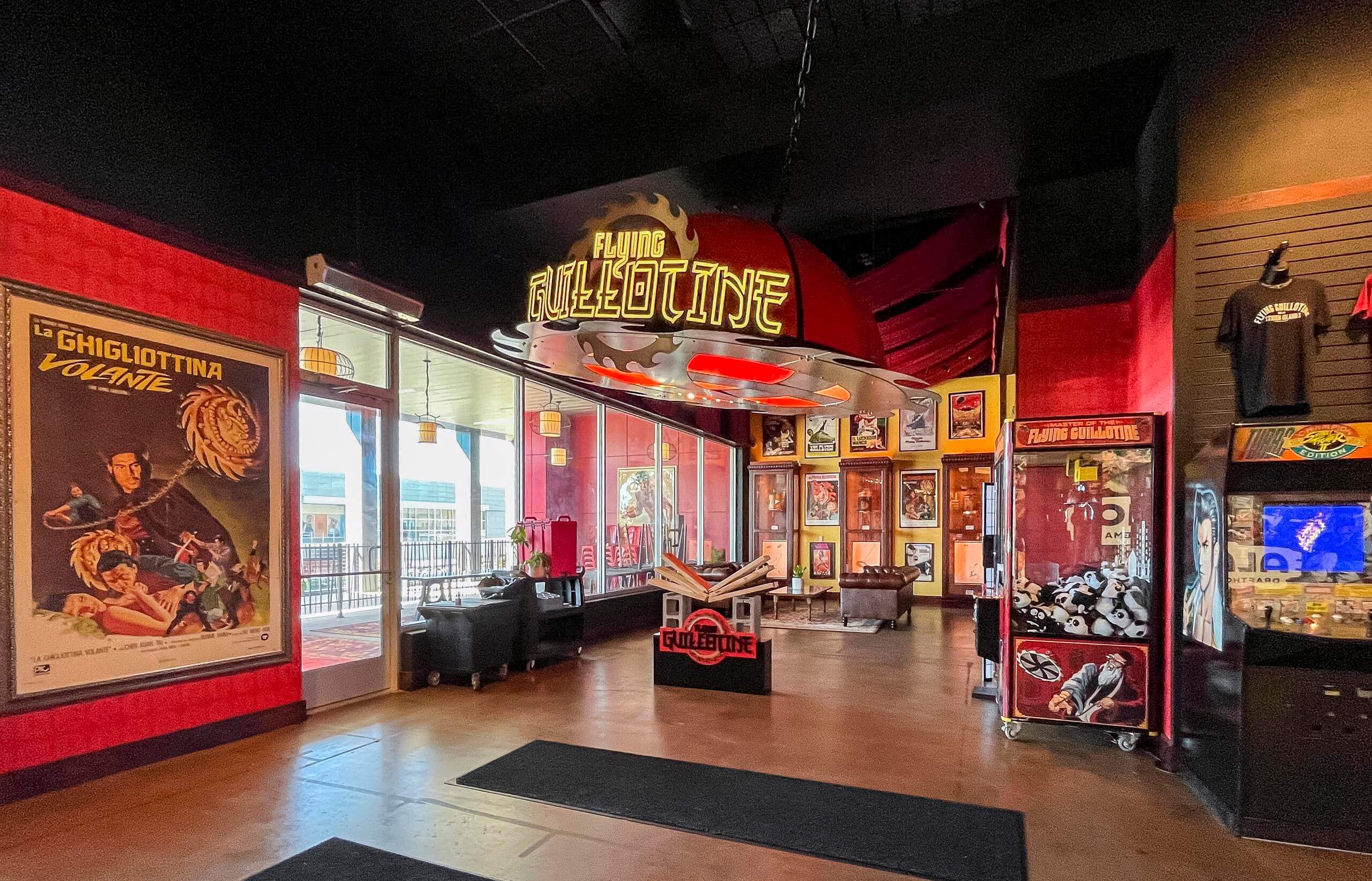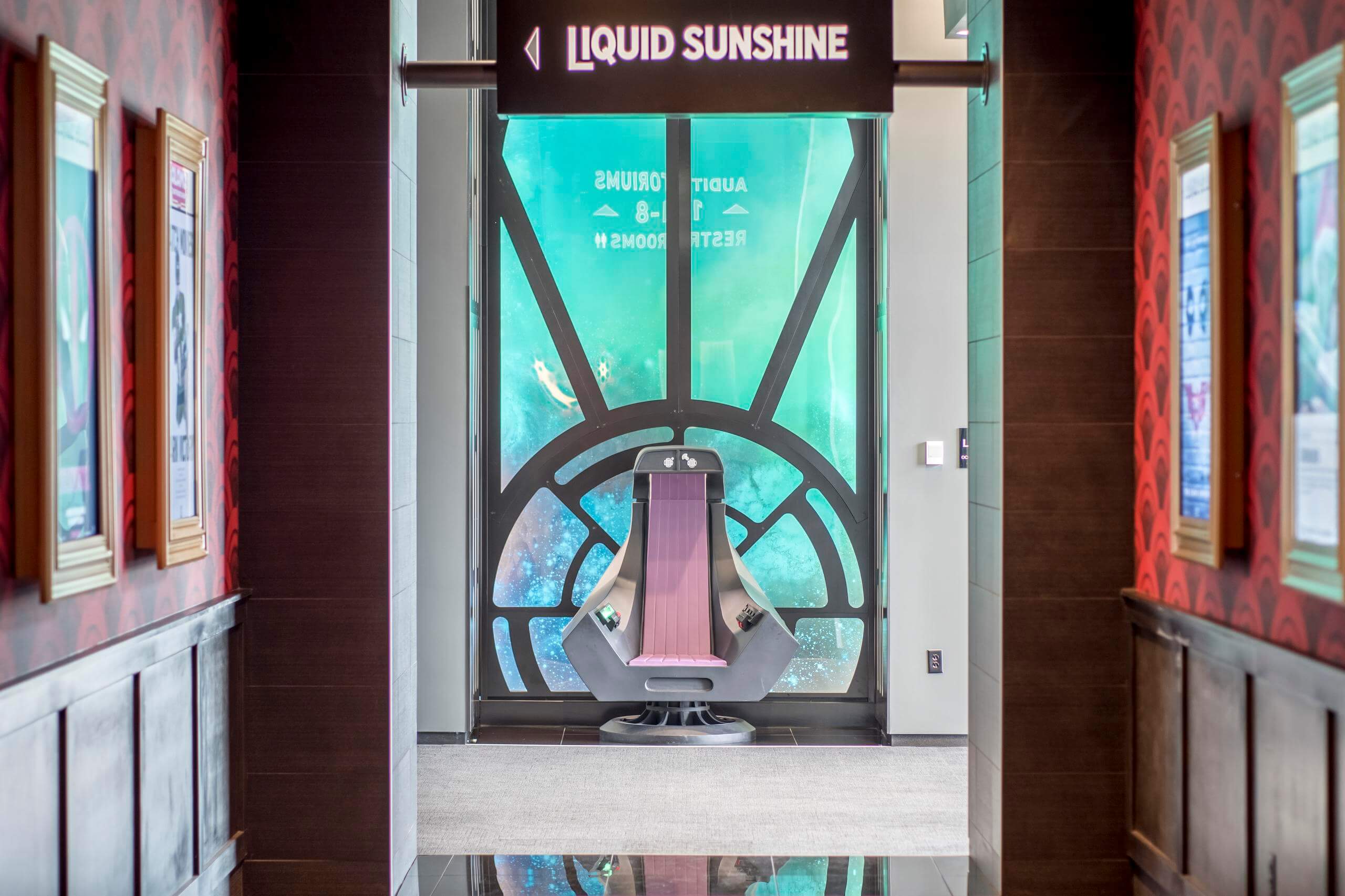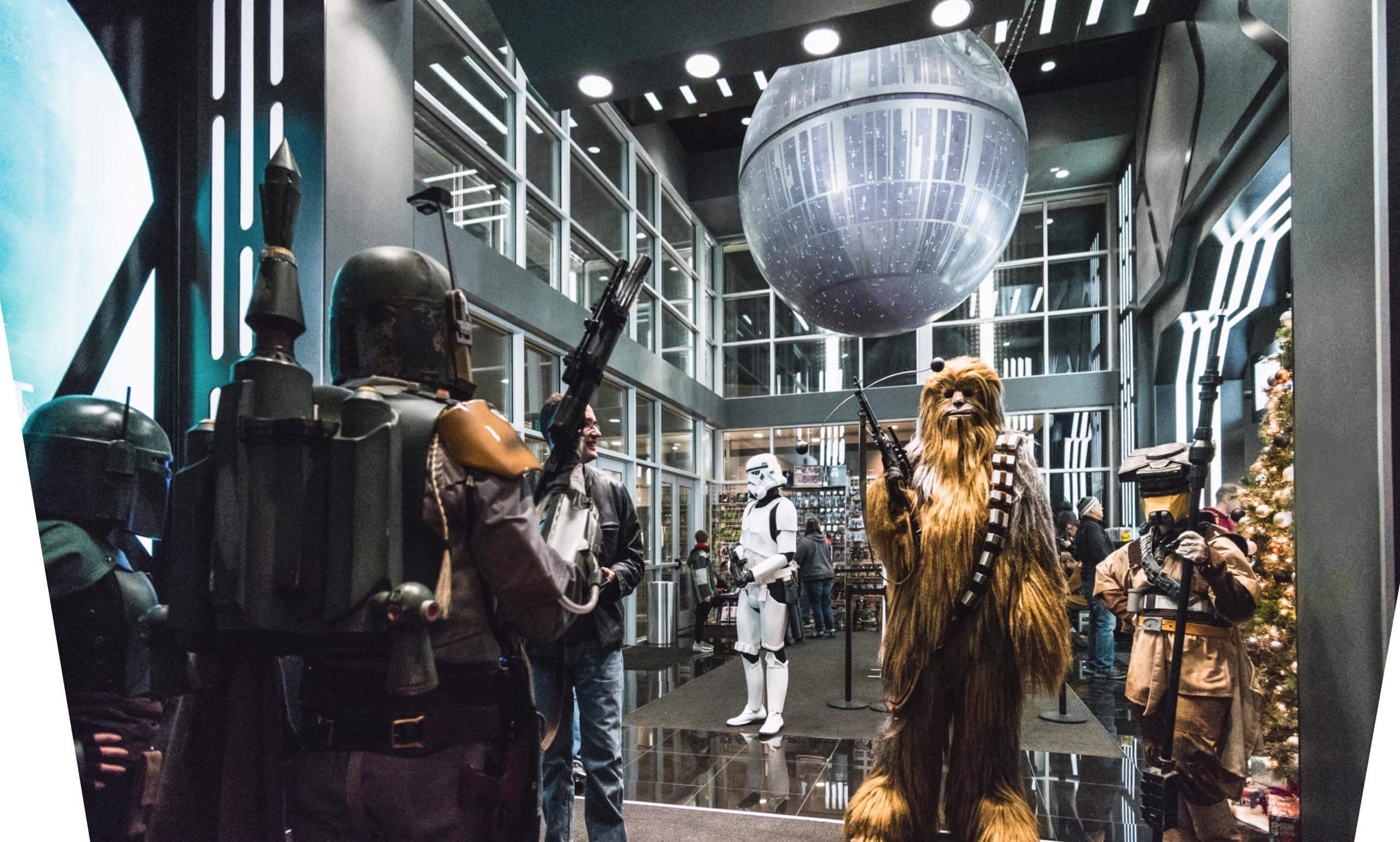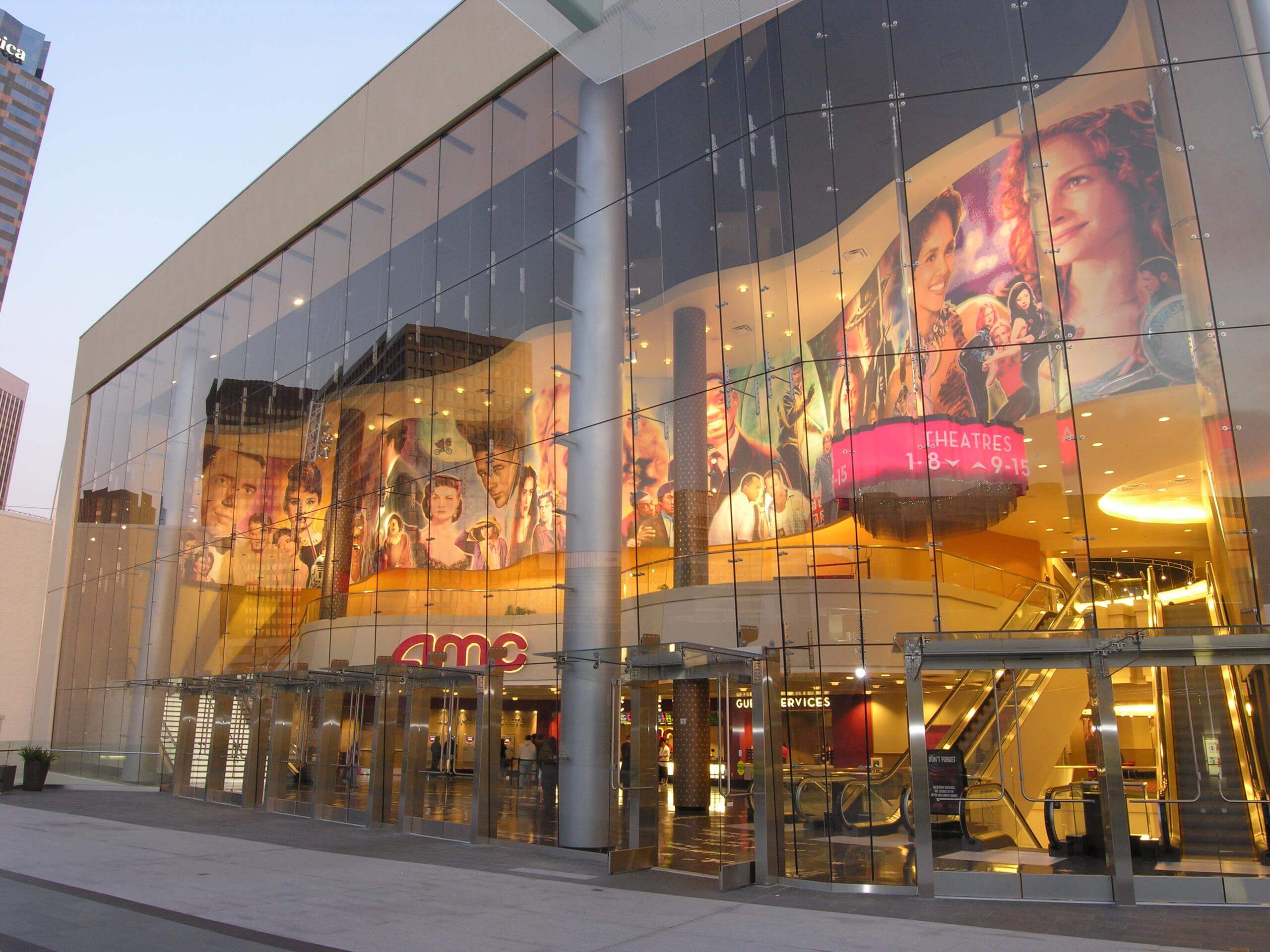There’s something uniquely nostalgic about movie-going in the 90s and Y2K era: neon lights, confetti and star-studded carpets, and lots of geometric patterns. Traditional movie theaters were being replaced with multi and megaplexes, which often housed over 16 viewing screens and included arcades, party rooms, upscale dining, bars and more.
It was the era of themed-entertainment, when restaurants like Rainforest Cafe, the Hard Rock Cafe and Planet Hollywood were the places to be. It was the boom of the modern movie theater and elevated cinema experience. It was when Dimensional Innovations got its start.
In 1993, DI took on its first cinema client, AMC Theaters. Like AMC, DI didn’t (and still doesn’t) settle for the status quo. The Kansas City-based theater franchise was an early trailblazer in the cinema industry and is credited for various entertainment staples such as megaplex viewing, immersive screens and sound, stadium seating, and even the built-in cupholder.
From larger-than-life popcorn buckets and giant floating solar systems, we designed and built a variety of signage, immersive theming and branding that helped transform AMC theaters into destination-like experiences. With innovation in mind, we also created a number of experimental designs like an in-house mock up of the “Concession Stand of the Future”. While some of these designs were too lofty and extravagant for realistic execution, they gave partners a glimpse of what was possible with our forward-thinking vision.
As this partnership grew, so did our client list and portfolio in cinema design. DI’s design + build model was unique, which intrigued and excited additional clients. We began working with other industry leaders such as Dickinson, Cinemark, Caribbean Cinemas, Rave Cinemas, Hollywood, Alamo Drafthouse, Sundance Cinemas, Muvico, Carmike and more–continuing to create “wow” moments experiences that make movie-going feel like a special event.
As technology advanced and entertainment experiences evolved, we began to help megaplex partners elevate venues to keep up with a variety of industry arms races (think: luxury reclining seats, enhanced screens and sound, in-seat dining, social media experiences and more). Over 30 years later, DI has worked on over 500 movie theaters, including several international venues. Our partnership with Alamo Drafthouse (recently acquired by Sony) has resulted in a variety of projects such as the Death Star and Flying Guillotine, which illustrate the value of transforming theaters into themed experiences built for photo ops and social engagement.
Cinema provides an escape from reality that people yearn for. But as viewer expectations grow and attention spans shrink, the cinema experience must continue to evolve as it always has. We see this taking shape through elevated technology, video and audio experiences that feel more personalized and immersive than ever. For example, new technology can bring to life a more “choose your own adventure” experience. The more people feel something is tailored for them the more likely they are to return as loyal patrons.
Megaplex auditoriums also have the opportunity to go beyond movie viewings to serve as entertainment hubs where people can connect through multimedia experiences. Taylor Swift: The Eras Tour and RENAISSANCE: A FILM BY BEYONCÉ are prime examples of this. Traditional expectations of staying in your seat and silencing your cellphones were quickly replaced with dancing, singing and social media moments–almost like you’re at the concert itself. Moving forward, how can we grow and innovate these types of experiences in cinema?
One thing we’ve learned about the industry is that it's highly resilient. Despite external forces pitted against it (streaming services, at-home theaters, COVID-19, writers’ strikes etc.), the magic of movie-going is still very much alive and well. In fact, we’ve got some pretty remarkable projects in the works that prove going to the movies is far from a forgotten pastime. Stay tuned.



